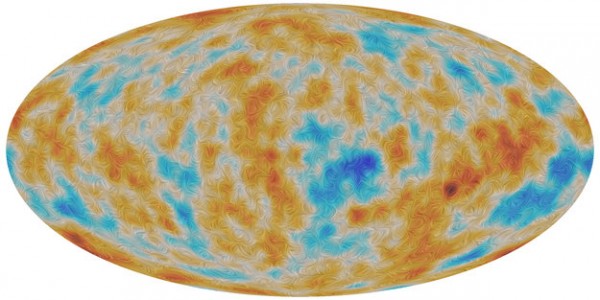First Stars are 100 Million Years Younger than Previously Thought
| Ana Verayo | | Feb 06, 2015 06:32 AM EST |
(Photo : ESA) Polarization of the Cosmic Microwave Background
The first stars in the universe apparently formed 100 million years later than previously thought, according to new research.
This data was acquired from the European Space Agency's Planck Space Telescope and indicates the first ancient star formations began some 550 million years after the Big Bang occurred and gave life to the cosmos.
Like Us on Facebook
Before stars were born in the reionization epoch, the universe was literally existing in a dark age where there was no visible light. The Big Bang occurred some 13.8 billion years and filled up the universe with matter.
Scientists previously though the earliest stars began shining some 440 million years ago after the Big Bang. New data which have yet to be confirmed by more measurements and data, however, suggest stars are 100 million years younger.
The Planck space telescope was launched in 2009 to further study the cosmic microwave background or the remnants of faint radiation echoes from the Big Bang. This telescope was built for precision, however. It was decommissioned in 2013 after it ran out of liquid helium coolant.
According to scientist Carlo Baccigalupi of the International School of Advanced Studies in Trieste, Italy, Planck's observations suggest stars are younger than first believed. He said this new understanding can produce major consequences in the attempt to further understand the dark forces found in the universe.
These dark forces involve invisible dark matter and dark energy, which are forces that exist in the universe and whose natures are still unknown to scientists.
The reionization that occurred during the Big Bang refers to a process in which ultraviolet light energy exploded from the first stars. This split hydrogen atoms into protons and electrons.
These findings were published in the journal, Astronomy and Astrophysics.
TagsFirst Stars After the Big Bang Were Made 140 Million Years Later Than Previously Thought, Big Bang, first stars of the universe, planck space telescope, ESA, planck first stars 140 million years big bang
©2015 Chinatopix All rights reserved. Do not reproduce without permission
EDITOR'S PICKS
-

Did the Trump administration just announce plans for a trade war with ‘hostile’ China and Russia?
-

US Senate passes Taiwan travel bill slammed by China
-

As Yan Sihong’s family grieves, here are other Chinese students who went missing abroad. Some have never been found
-

Beijing blasts Western critics who ‘smear China’ with the term sharp power
-

China Envoy Seeks to Defuse Tensions With U.S. as a Trade War Brews
-

Singapore's Deputy PM Provides Bitcoin Vote of Confidence Amid China's Blanket Bans
-

China warns investors over risks in overseas virtual currency trading
-

Chinese government most trustworthy: survey
-

Kashima Antlers On Course For Back-To-Back Titles
MOST POPULAR
LATEST NEWS
Zhou Yongkang: China's Former Security Chief Sentenced to Life in Prison

China's former Chief of the Ministry of Public Security, Zhou Yongkang, has been given a life sentence after he was found guilty of abusing his office, bribery and deliberately ... Full Article
TRENDING STORY

China Pork Prices Expected to Stabilize As The Supplies Recover

Elephone P9000 Smartphone is now on Sale on Amazon India

There's a Big Chance Cliffhangers Won't Still Be Resolved When Grey's Anatomy Season 13 Returns

Supreme Court Ruled on Samsung vs Apple Dispute for Patent Infringement

Microsoft Surface Pro 5 Rumors and Release Date: What is the Latest?










